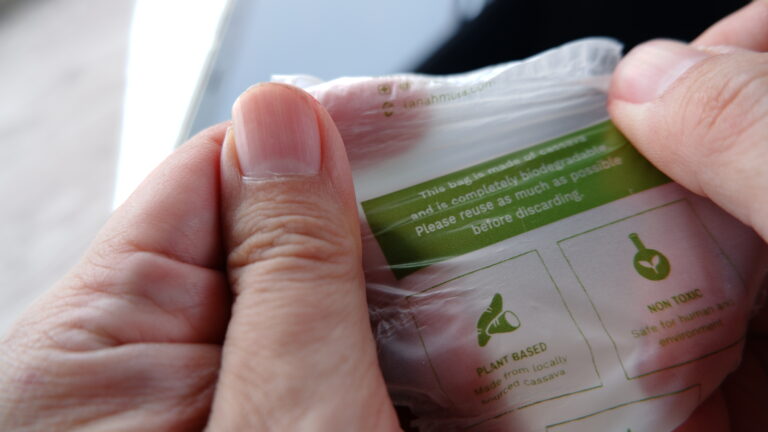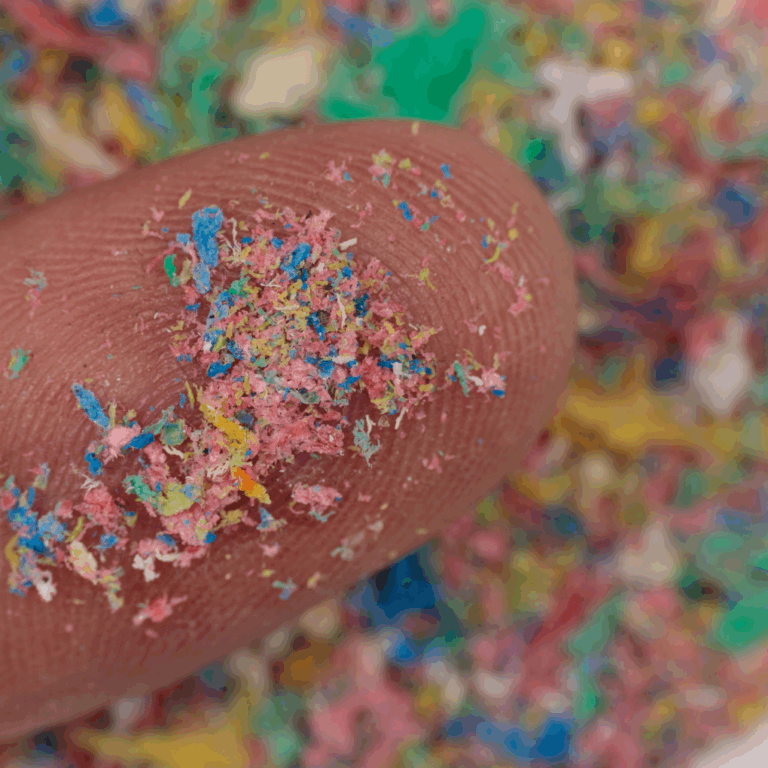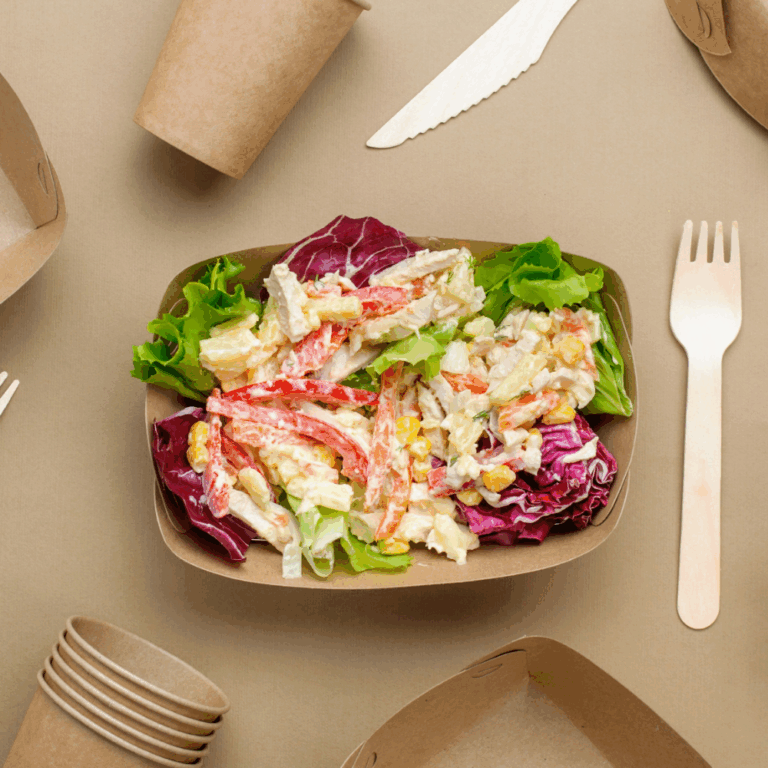
Every July, millions of people around the world decide they’ve had enough of plastic taking over their lives—and the planet. And honestly? Same. Going plastic-free in July isn’t about doing everything perfectly (who can?), but it is about noticing how much plastic sneaks into our daily routines… and trying a different way, even if it’s just one swap at a time.
I first heard about Plastic Free July® a few years ago and thought, “Well, that sounds like something for people who have their lives way more together than I do.” But then I realized it’s not about becoming a zero-waste wizard overnight, it’s about paying attention. It’s about saying no to the plastic straw that comes with your iced coffee, yes to the reusable tote that lives in your car now, and maybe rethinking that cling wrap habit that’s been hanging around way too long.
This month-long challenge is a great excuse (or nudge, or friendly kick in the pants) to try living with a little less plastic, a little more intention, and maybe even a little more creativity. Whether you’re already rocking the mason jar life or just curious about how to use less plastic without losing your mind, Plastic Free July is a great place to start.
Related Post: The Truth About Plastic: Why Plastic-Free Living Matters
What Is Plastic Free July®?
Plastic Free July® started as a small local initiative in Western Australia in 2011. A handful of people decided to try saying no to single-use plastic for one month, and, spoiler alert: it caught on quickly. What began as a local challenge has now evolved into a global movement with millions of participants across more than 190 countries. Not bad for an idea that started with a reusable coffee cup and a lot of determination.
It’s run by the Plastic Free Foundation, a non-profit that helps individuals, schools, workplaces, and entire communities reduce plastic waste in practical, sustainable ways. Their mission? To make it easier for everyone to make small (and sometimes not-so-small) changes that add up to a big impact.
The challenge itself is simple: for the month of July, try to avoid single-use plastics as much as you can. That includes things like plastic bags, water bottles, straws, food wrappers, and takeout containers—the usual suspects. But here’s the beauty of it: you choose your level. Whether you commit to skipping the “top four” (bags, bottles, straws, and coffee cups) or go all-in and aim for a totally plastic-free month, it’s your call.
Plastic Free July isn’t just a personal challenge—it’s a global movement. In 2024 alone, 174 million people worldwide took part, making it the most significant waste-reduction initiative on the planet. Participants helped cut household waste by 3.8%, avoiding an incredible 12.8 billion kilograms of waste over the past six years.1
Plastic Free July isn’t about guilt. It’s about awareness and giving yourself a reason to experiment with some better habits that might stick around long after July’s over.
Why Bother Going Plastic-Free?
Plastic is showing up in more places than we once imagined. For a long time, many of us assumed plastic pollution was mainly an issue in countries without strong recycling systems. If we were recycling at home, using our blue bins properly, we thought we were doing our part. However, it has become clear that recycling alone isn’t solving the problem, and the plastic waste issue is just as real in countries with effective waste management systems as it is elsewhere.
Microplastics have been found in soil, food, drinking water, and even human blood. Plastic isn’t just “out there” anymore; it’s right here, woven into our everyday environment.
A 2022 study found microplastics in 100% of the human blood samples it tested.2 That’s a hard number to ignore. Scientists have also found microplastics in soil, drinking water, breast milk, and fresh produce. This is a reminder that plastic doesn’t just disappear when we throw it away; it breaks down into tiny particles and stays in the environment for a long time.
And it’s not only the leftovers we need to think about. The process of making plastic is resource-intensive and polluting. It’s tied to fossil fuel extraction, contributes to greenhouse gas emissions, and releases harmful chemicals along the way.
Even when plastic is labeled “recyclable,” that doesn’t always mean it gets recycled. Globally, only about 9% of plastic has been recycled. Much of it ends up in landfills, incinerators, or the natural environment. Some items, such as soft plastics, coffee cup lids, and black plastic trays, are theoretically recyclable but are rarely processed due to contamination or a lack of proper infrastructure.
That’s why going plastic-free in July is so important. Each swap we make helps reduce plastic waste and challenges the notion that single-use is the only option. It’s not about being perfect—it’s about paying attention and making more sustainable choices where we can.
Related Post: How to Recycle: A No-Nonsense Guide to Doing It Right
Related Post: Microplastics in Our Lives: Why It’s Time to Take Action
How to Join the Plastic Free July® Movement

Plastic Free July® isn’t about doing everything perfectly—it’s about showing up and trying it. Whether you’re just starting to rethink your daily habits or you’ve already swapped a few plastics out of your life, this challenge meets you exactly where you are.
If you want extra motivation (and some helpful tips), you can officially sign up at plasticfreejuly.org. But you don’t have to register to take part. The idea is simple: refuse single-use plastics throughout July and hopefully build a few lasting habits along the way. Download their getting-started checklist here.
Real change happens when lots of small choices add up. When enough of us are involved, even one swap at a time makes a difference.
How to Get Started with Plastic Free July®
Starting your Plastic Free July journey doesn’t mean you must overhaul your entire life overnight. (Deep breaths.) It’s about noticing, questioning, and slowly shifting the habits that have quietly wrapped themselves in plastic.
Here’s how to ease into it:
- Start with a Plastic Audit: Before you make any changes, take a quick look around. What kinds of plastic show up the most in your daily routine? Is it food packaging? Bathroom products? Those endless grocery store bags? You don’t need to make a formal list—just noticing is powerful. Awareness is the first step to change.
- Pick One Area to Focus On: Trying to tackle everything at once can feel overwhelming (and honestly, a little discouraging). Instead, choose one area to start. Maybe it’s your kitchen, your morning coffee routine, or your shopping habits. Small, specific wins build momentum.
- Swap Smart, Not Fast: The goal isn’t to throw out everything plastic you own (that would create even more waste!). Instead, when something runs out, replace it with a plastic-free alternative. Refillable cleaning products, bar soap instead of bottled, and reusable produce bags are just a few examples of the options that are growing every day.
- Embrace Progress, Not Perfection: If you accidentally bring home a plastic-wrapped snack or forget your reusable bag, it’s okay. Really. Plastic Free July® isn’t about being perfect—it’s about making more mindful choices, more often. Celebrate the changes you do make. They matter.
- Get Inspired and Stay Connected: Following the official Plastic Free July® website or connecting with others who are participating can keep your spirits high. Swap tips, share wins, and laugh at the occasional reusable-bag-forgetting moment.
Psst… want a little help spotting those hidden plastics?
Grab the free Microplastics Reduction Home Audit + Action Plan at the top of this page. It’s a simple way to turn awareness into action.
From Awareness to Action: Your Next Steps for Plastic Free July
Making the switch to a plastic-free lifestyle can feel a little overwhelming at first, but it gets a lot easier when you break it down by where you spend your time. Whether you’re mostly at home, clocking hours at work, or packing lunches for school, there are simple swaps and small changes that add up to a big impact.
At Home: Where Small Swaps Add Up
- Kitchen: Swap cling wrap for beeswax wraps or reusable silicone lids. Buy loose fruits and veggies instead of pre-packaged ones.
- Bathroom: Switch to bar soap, shampoo bars, and plastic-free toothpaste tablets when you run out.
- Cleaning: Try refillable cleaning concentrates instead of buying new plastic spray bottles each time. (Blueland fans, I see you!)
- Shopping: Keep reusable bags, produce bags, and jars handy for groceries or farmer’s market runs.
At Work: Packing Lighter, Thinking Smarter
- Lunch: Bring your own containers, utensils, and a reusable water bottle or coffee cup.
- Snacks: Skip individually packaged snacks and bring bulk nuts, fruit, or homemade treats.
- Office Supplies: Look for refillable pens, recycled paper, and plastic-free sticky notes or alternatives.
- Conversations: Mention Plastic Free July® to coworkers, sometimes just talking about it sparks new ideas for everyone.
At School: Learning and Leading by Example
- Lunchboxes: Pack waste-free lunches with stainless steel containers, beeswax wraps, and a reusable water bottle.
- School Supplies: Choose notebooks with recycled covers, refillable pens, and canvas backpacks over plastic ones.
- Projects and Fundraisers: Suggest eco-friendly options for class activities, like plastic-free fundraisers or recycled craft projects.
- Set the Example: Kids, teachers, and parents can all be powerful role models—small changes get noticed!
Tips for Staying on Track Without the Stress
The goal of Plastic Free July (or any plastic-free challenge) isn’t perfection—because, let’s be honest, perfection doesn’t exist. It’s about progress. Every swap you make is a win, and every step forward counts. The more we take on this journey, the more we can help shift those habits.
Here are some tips to keep things stress-free and enjoyable:
- Don’t aim for perfection—progress counts: You don’t need to have a perfectly plastic-free kitchen or bathroom by the end of the month. Small, consistent changes have a bigger impact over time than trying to make them all at once.
- Share the journey with friends or online: Whether it’s a group of friends or your Instagram followers, telling others about your plastic-free challenge can keep you motivated and create a sense of community. Plus, you might inspire someone else to make a change, too!
- Keep track of wins (and challenges) in a journal or photo diary: Sometimes, it’s easy to forget how far we’ve come. Documenting your progress—even the hiccups—can help you see the impact you’re making. It can also be fun to look back on the changes you’ve made and how you’ve adapted over time.
Remember, every small victory is a step toward a less plastic-dependent world. And if you slip up, that’s okay too. It’s all part of the process.
What Happens After July?
The end of Plastic Free July doesn’t mean the end of your journey—it’s just the beginning of a new chapter in your sustainable lifestyle.
Here’s how to keep the momentum going:
- Celebrate your wins: First, take a moment to give yourself credit for all the changes and improvements you’ve made. Whether you went all-in or made just a few adjustments, every effort counts. Celebrate your progress, no matter how big or small; it’s about making lasting changes, not being perfect.
- Reflect on what habits felt doable: Look back at what worked well for you. Maybe you found that carrying a reusable water bottle was easier than you thought, or you discovered a favorite plastic-free snack packaging. These are the habits to hold on to. Understanding what’s sustainable for your lifestyle will help you move forward with confidence.
- Keep what works, and don’t be afraid to keep tweaking: Sustainability isn’t about a one-time challenge—it’s about continuous improvement. Keep what’s working for you, but don’t be afraid to make adjustments. If you hit a roadblock or if a certain swap didn’t work as well as you hoped, it’s okay! Revisit the items in your life that still need attention and tweak your approach as needed.
This Has Been About What is Plastic Free July®
At its heart, Plastic Free July® is about awareness, action, and community. It’s a global movement that invites us to look a little closer at plastic’s role in our daily lives and to imagine what life could look like with less of it. Whether you make one swap or twenty, the goal isn’t perfection. It’s participation.
By refusing single-use plastics for a month (and maybe beyond), we help create a ripple effect that leads to bigger changes in our homes, communities, and planet. Plastic Free July® is a reminder that every small choice matters
View Article Sources
- Plastic Free Foundation. (2024). Impact 2024. https://plasticfreefoundation.net/our-impact/impact-2024/
- Leslie, H. A., van Velzen, M. J. M., Brandsma, S. H., Vethaak, A. D., Garcia-Vallejo, J. J., & Lamoree, M. H. (2022). Discovery and quantification of plastic particle pollution in human blood. Environment International, 163, 107199. https://doi.org/10.1016/j.envint.2022.107199






